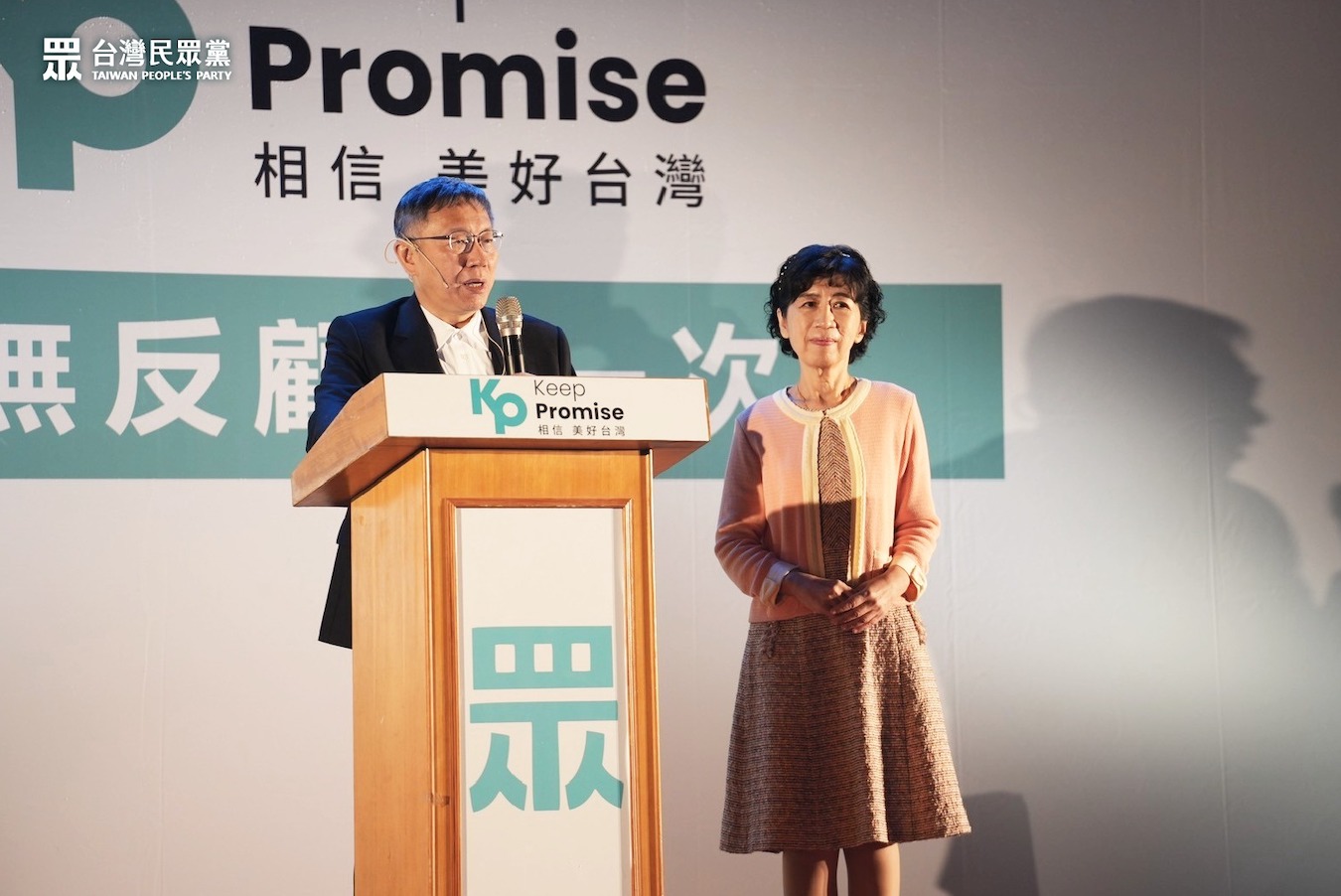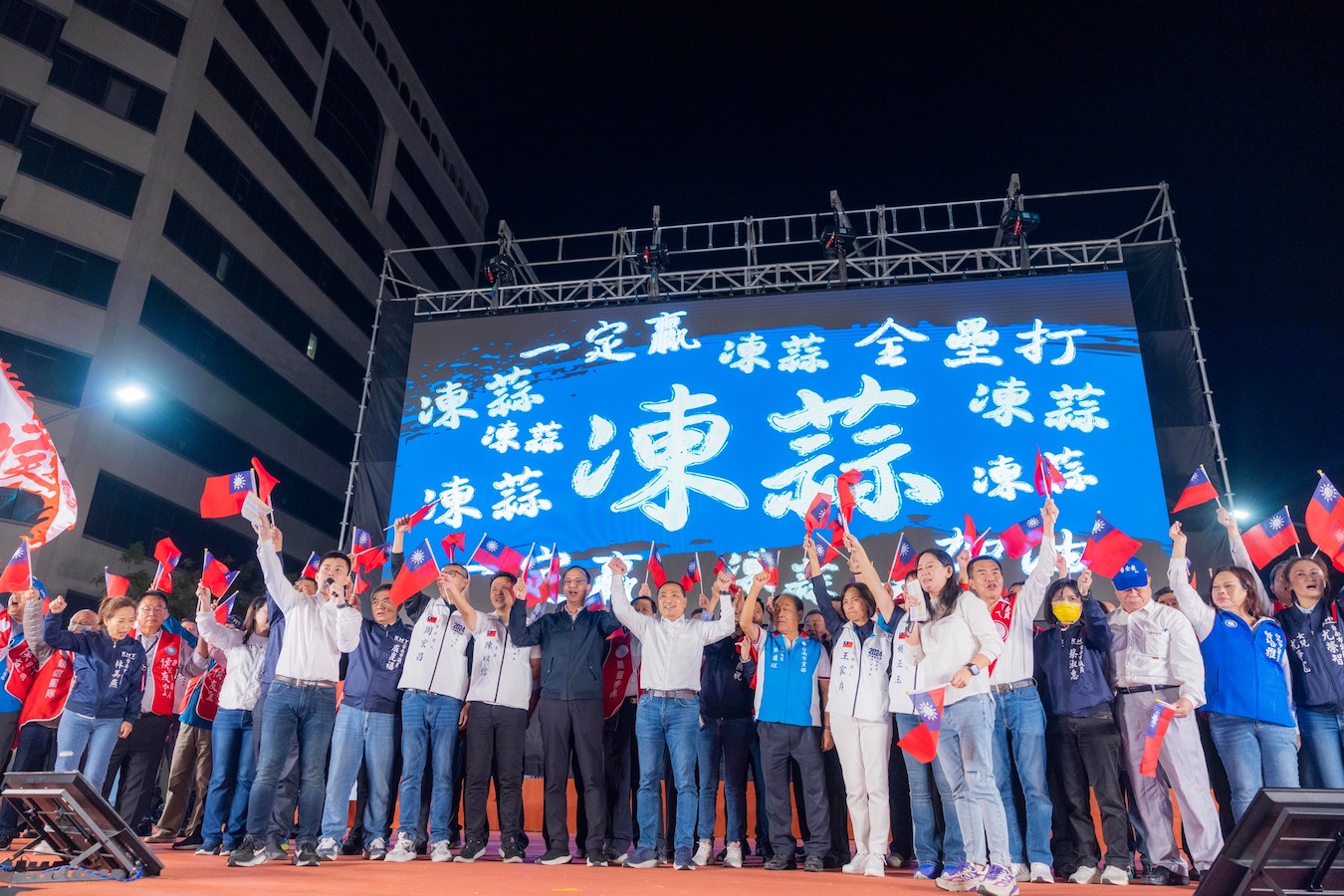by Brian Hioe
語言:
English
Photo Credit: KMT/Facebook
THE KMT AND TPP have begun to lean into calls to restart talks over the Cross-Strait Services Trade Agreement (CSSTA). The CSSTA was the controversial trade agreement that the KMT hoped to ink with China during the Ma administration, resulting in the outbreak of the 2014 Sunflower Movement.
The trade agreement would have allowed for Chinese investment in Taiwan’s service sector industry. As such, it was feared that this would lead to the deterioration of political freedoms in Taiwan, with the CCP seeking to weaponize China’s economic might against Taiwan. It was expected, for example, that companies would self-censor because of the influence of Chinese investors.
There were already fears that this would occur in past years when media outlets were purchased by pro-China Taiwanese businessmen such as Tsai Eng-meng of the Want Want Group. After acquiring the China Times and CtiTV, such outlets began to avoid reporting on China in a critical light.
 TPP presidential candidate Ko Wen-je (left). Photo credit: Ko Wen-je/Facebook
TPP presidential candidate Ko Wen-je (left). Photo credit: Ko Wen-je/Facebook
The KMT was pushed toward the idea after TPP presidential candidate Ko Wen-je suggested that Taiwan would benefit from the CSSTA. Ko was criticized over this stance, seeing as he entered politics in the wake of the Sunflower Movement. Ko later clarified that he only opposed the means lacking in transparency by which the KMT attempted to pass CSSTA but not the CSSTA itself and sought to be ambiguous on his stance on the CSSTA after.
Yet in the aftermath of these statements, the KMT began to embrace the notion of reviving the CSSTA. Although the TPP also at present calls for reviving the CSSTA, this position is now more closely associated with the Hou campaign.
Calling for restarting talks about the CSSTA takes place at a time that China has threatened to end ECFA, the trade agreement between Taiwan and China that predated the CSSTA, which the CSSTA built on. China claims that Taiwan is currently violating the terms of ECFA and has launched a trade probe into Taiwan. As the timing of this trade probe is to end right before elections, the Tsai administration has accused this of being politically motivated.
Nevertheless, it proves a question as to why the pan-Blue camp has called for reviving the CSSTA when the trade agreement provoked such backlash a decade ago. The Sunflower Movement was one of the largest social movements in Taiwanese history and proved instrumental in as to why the KMT has been unable to effectively reach out to youth for the past decade.
It is possible that the KMT believes that the current generation is different from the Sunflower generation, in that members of Gen Z may be more used to the prominent role of China in their cultural consumption, as in the use of TikTok/Douyin and so forth. But it also seems likely that the KMT has decided to lean into appealing to traditionalists rather than young people.
 KMT presidential candidate Hou You-yi (center). Photo credit: Hou You-yi/Facebook
KMT presidential candidate Hou You-yi (center). Photo credit: Hou You-yi/Facebook
After all, the TPP and KMT originally aimed at a joint ticket. This would allow the KMT to benefit from Ko Wen-je’s popularity among young people when the KMT had less than 10,000 members under forty years old a mere three years ago. But with the collapse of talks over a joint ticket, the KMT instead began to lean into outreach to ideological hardliners, with pan-Blue firebrand Jaw Shaw-kong named Hou You-yi’s vice presidential candidate and former Kaohsiung mayor Han Kuo-yu at the number one position on the party list, suggesting that Han could become the majority speaker or president of the Legislative Yuan.
To this extent, with the KMT having struggled electorally in the past decade since the Sunflower Movement, one notes that preceding periods in which it held power are now idealized. Even if the Ma administration ended with Ma’s popularity at an unprecedented low after the Sunflower Movement, he was still the last KMT president to hold power. As such, this period is now seen as a high point for the KMT. The KMT has struggled to come up with new messaging apart from that it intends to lower tensions with China by returning to policies of economic engagement–even if this sparked blowback in the past. The KMT, likewise, may perhaps not grasp the decisive shifts globally in the past decade, with Western countries seeking to distance themselves from China economically and reduce supply chain dependency, given the geopolitical threats.

